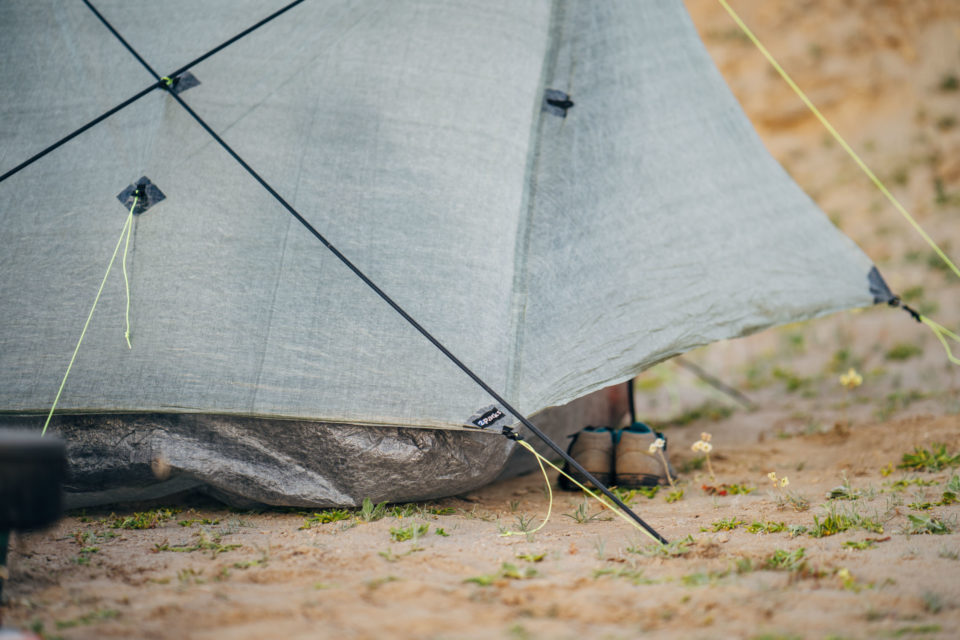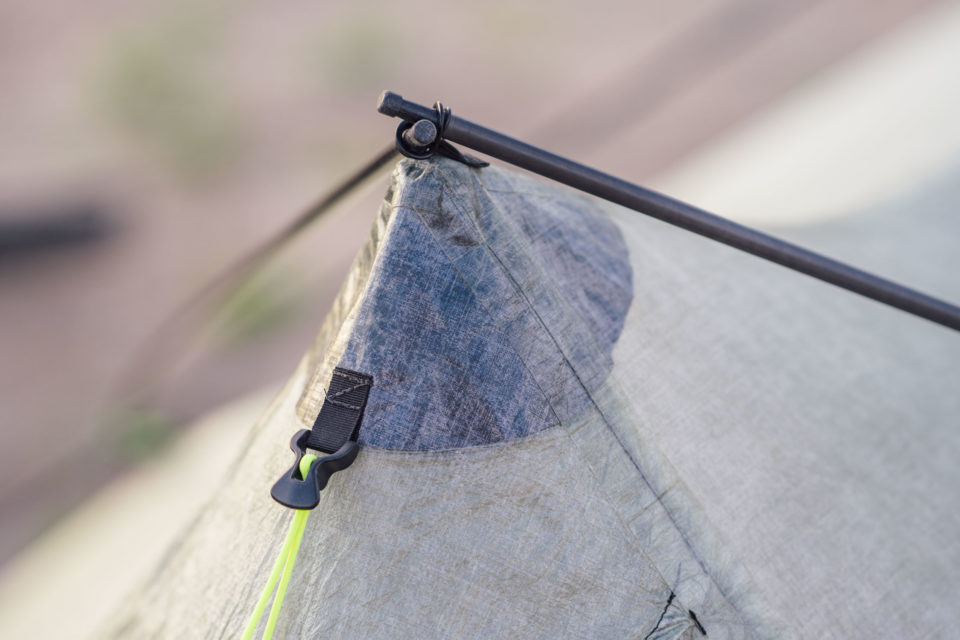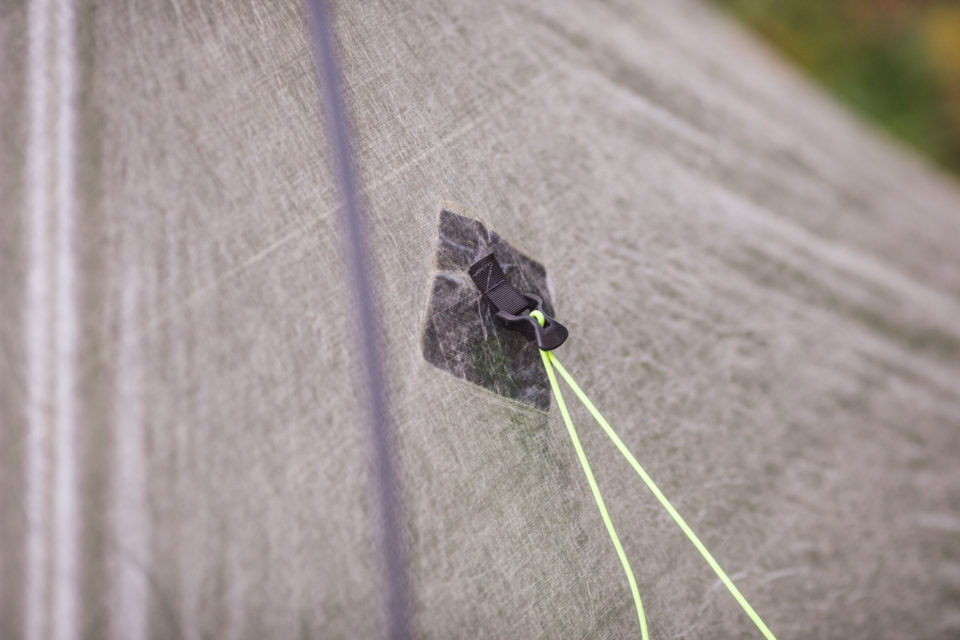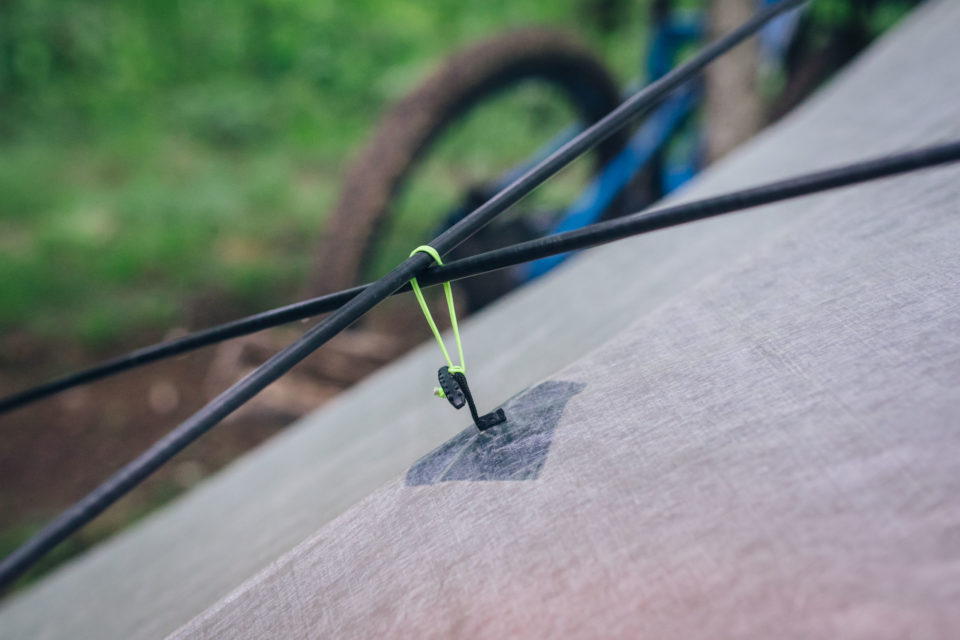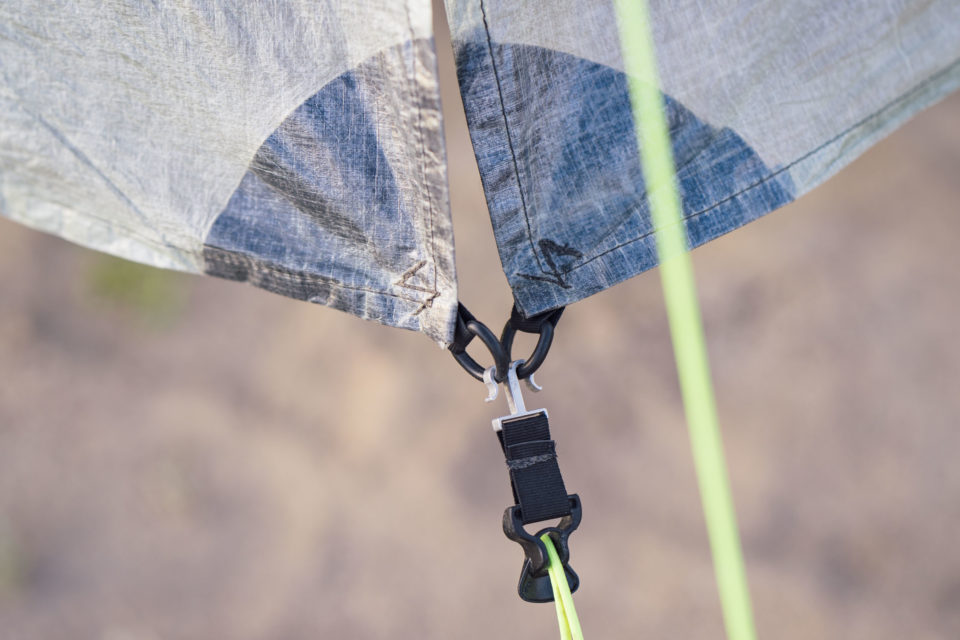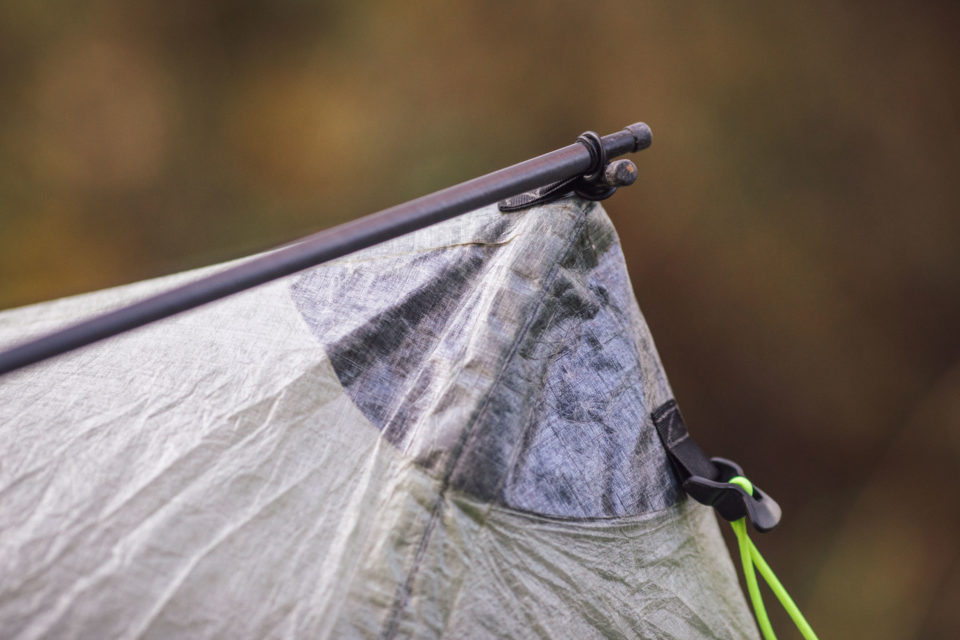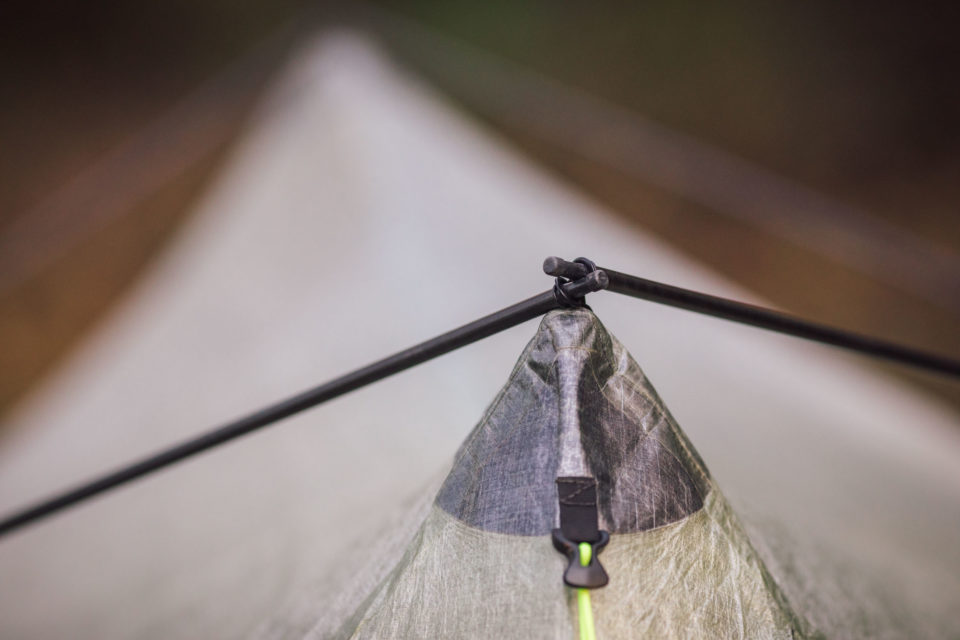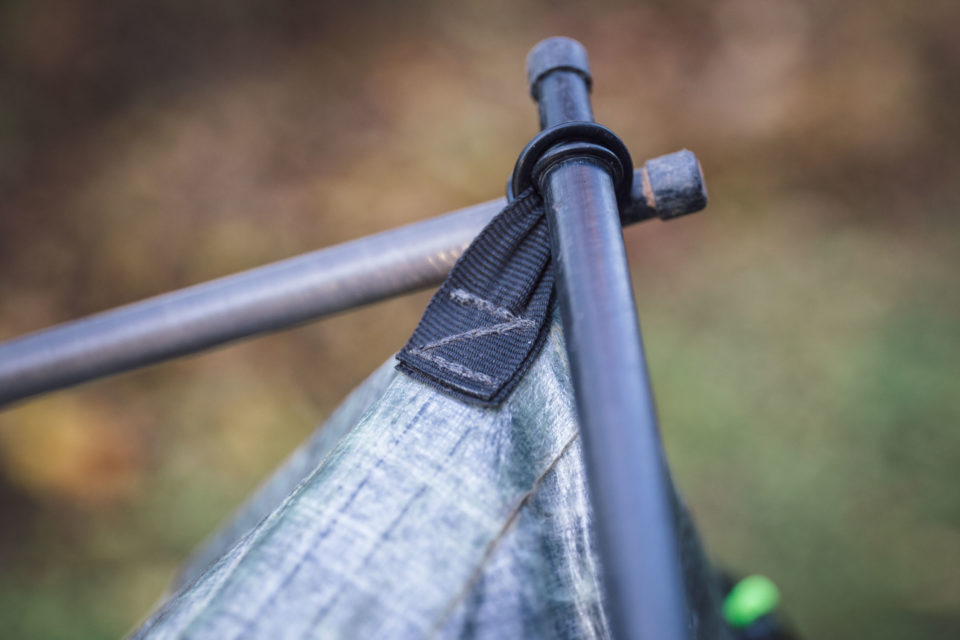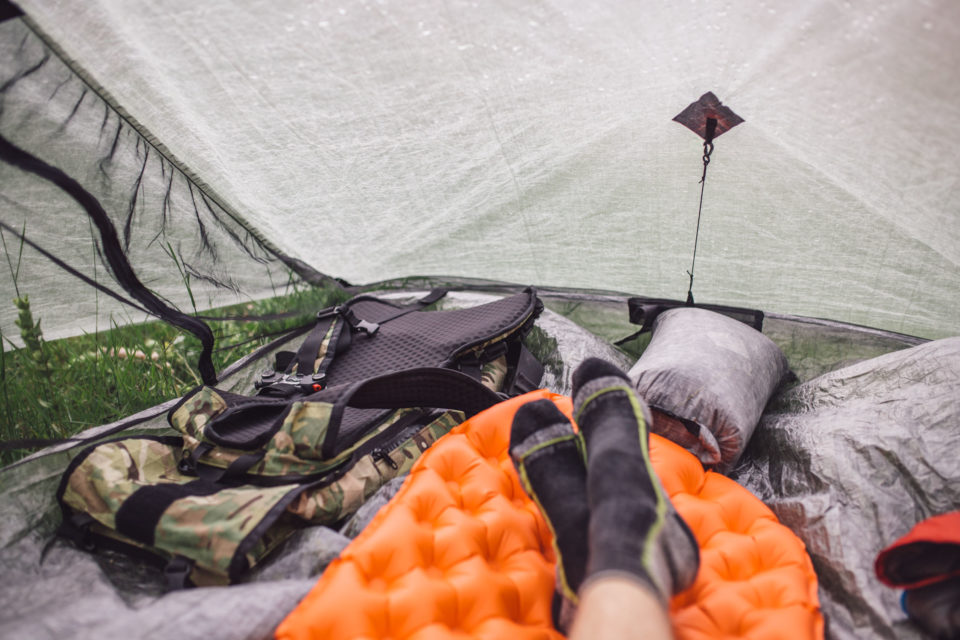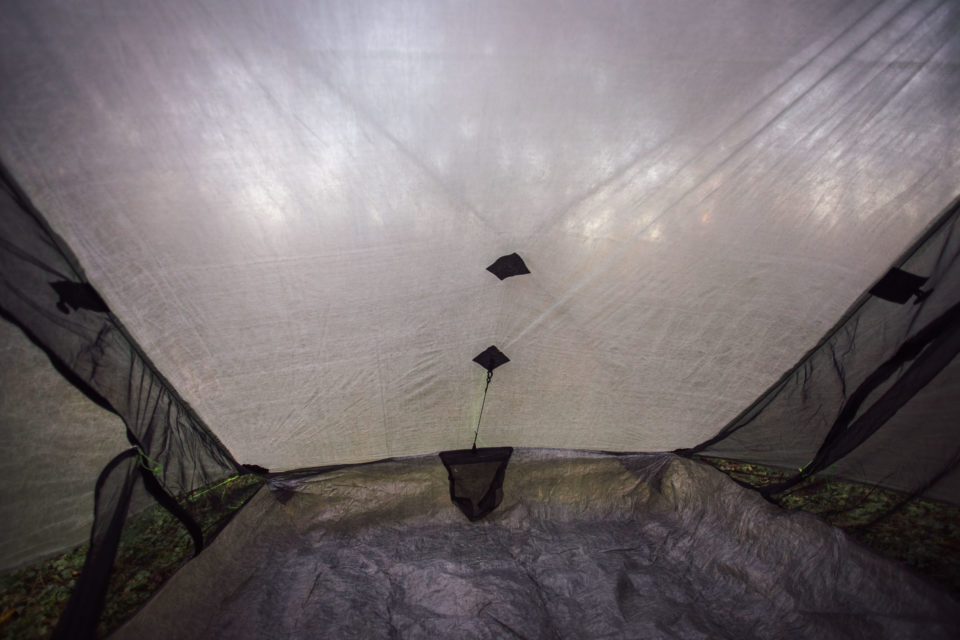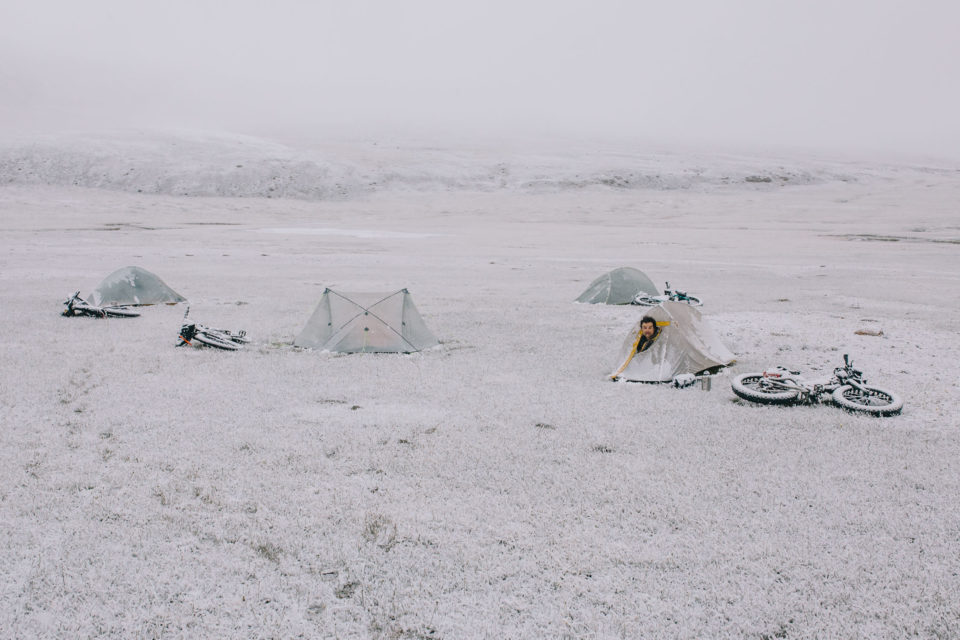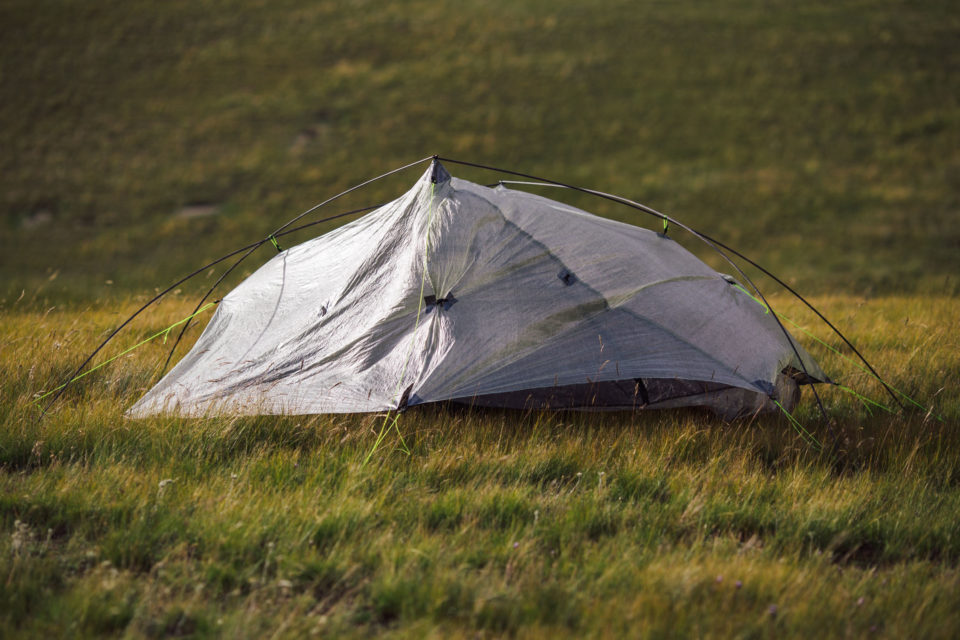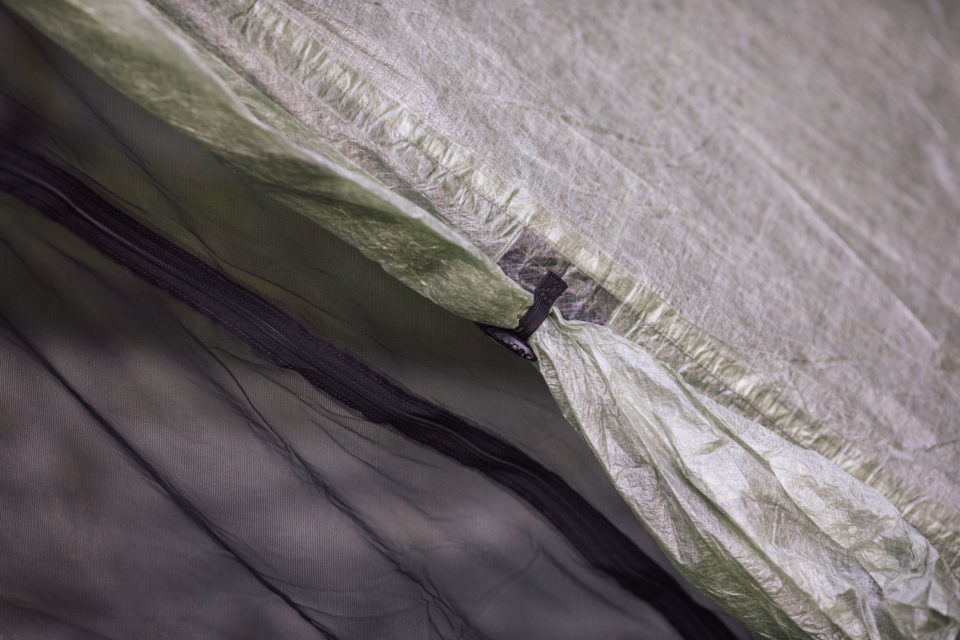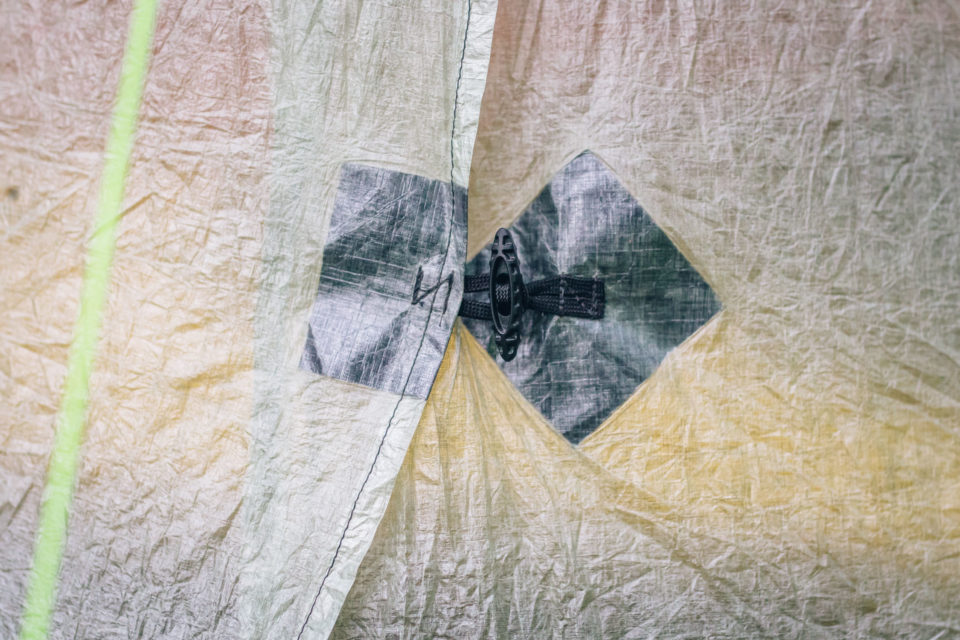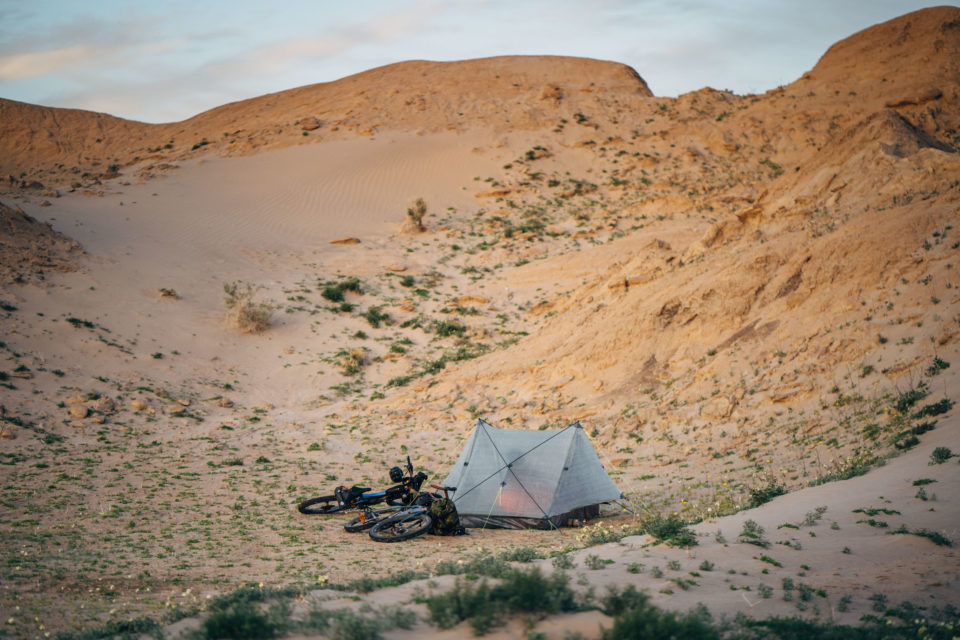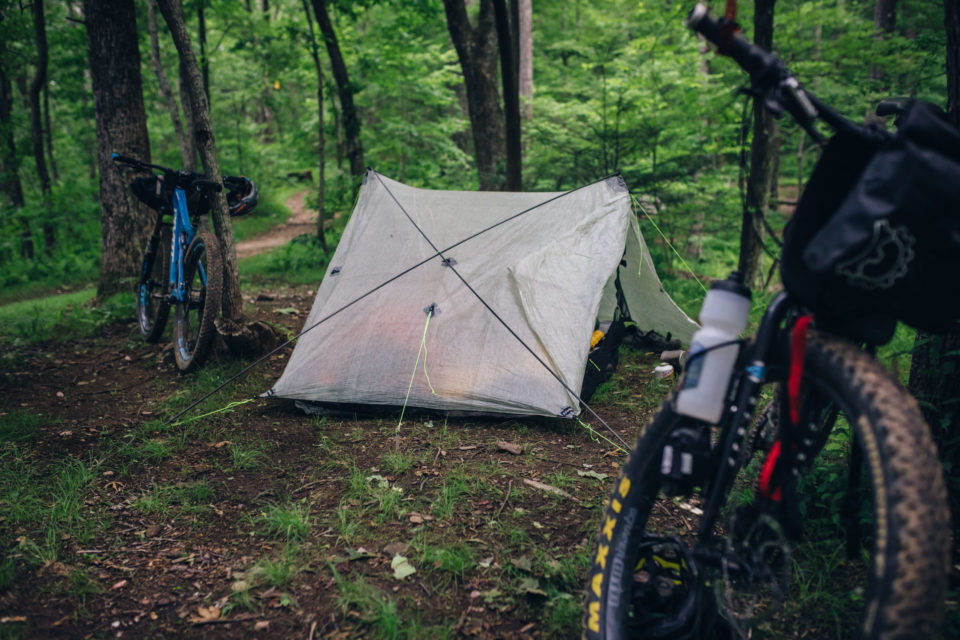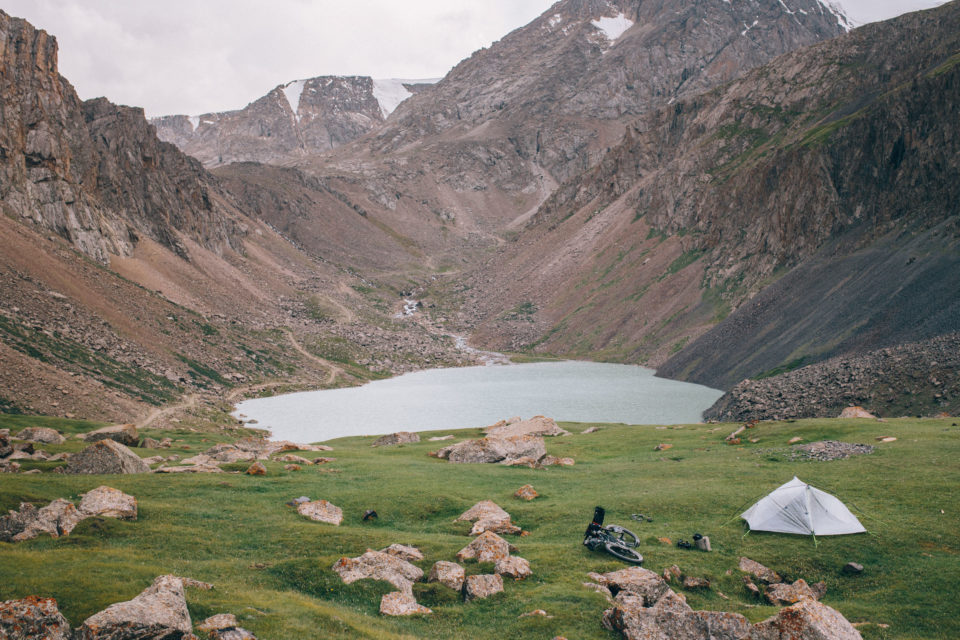Zpacks Duplex Tent Review + Freestanding Flex Kit
After several years of regular use—on bikepacking trips in Kyrgyzstan, the desert Southwest, the Appalachians, and many places in between—here’s our long-term review of the Zpacks Duplex tent and Freestanding Flex Kit…
PUBLISHED Oct 30, 2019
As its name implies, the Zpacks Duplex is a two-person shelter. It features a simple stitched and taped, single-wall, tarp-style design and is pitched using two trekking poles (or lightweight segmented poles that mimic trekking poles) and eight stakes. The Duplex has been around for quite some time, but more recently (around 2015-2016), Zpacks created the Flex Freestanding Kit, which can be purchased as an add-on to the standalone Duplex tent. Together, the Zpacks Duplex Flex offers the same ultralight Dyneema tent body and inner bug net with a carbon poleset designed to make it a freestanding tent without requiring any stakes to set up in its most minimal state. We’ve had one for review since 2016 and have tested it to no end before putting pen to paper. Here’s the full, long-term review.
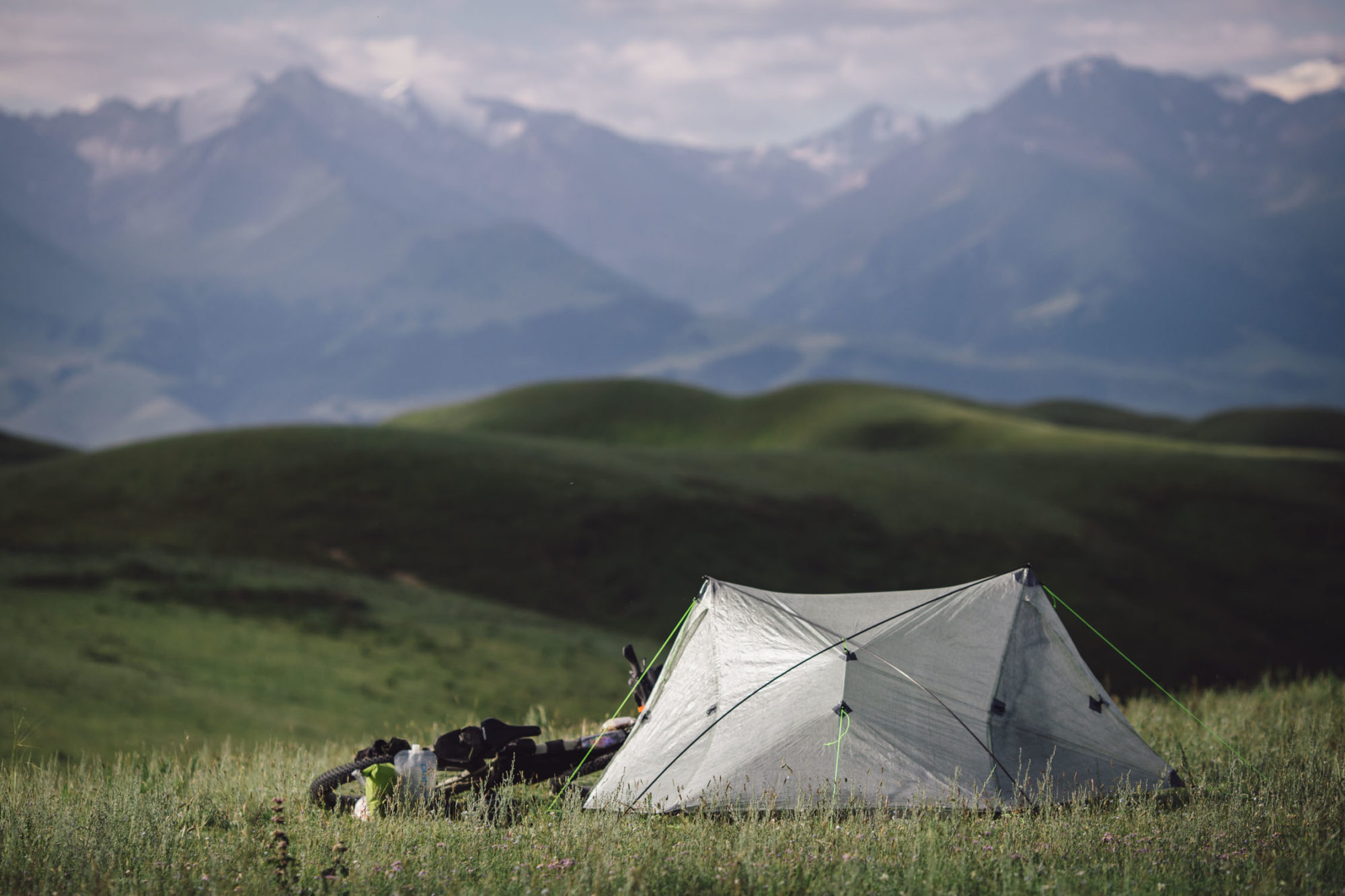
- Quick Specs
- Type: 2-person, single-wall, DCF tent
- Weight (w/o poles): 609 g (1.34 lbs)
- Weight (w/ 2 carbon poles): 745 g (1.64 lbs)
- Weight (Flex Poles): 286 g (10.1 oz)
- Packed size (tent only): 12 x 5.5” (30.5 x 14cm)
- Flex pole packed length: 17” (43.2cm)
- Carbon pole packed length: 11.25” (28.6cm)
Construction, Weight, and Packability
Considering that minimalism is Zpacks’ maxim, I’d be remiss to start this review from any angle other than the Duplex’s weight and size. For those unfamiliar, Zpacks is a relatively small outdoor gear brand that was founded in 2004 based on the need for lighter and smaller backpacking gear, most notably tents and sleeping bags. Proprietor Joe Valesko was planning a trip to hike the Appalachian Trail that year and thought most of the backpacking gear on the market was too heavy and bulky, so he decided to make his own. Shortly thereafter, Zpacks was born. Today, Zpacks has evolved into a well-respected ultralight gear manufacturer that offers a sizable collection of tents, sleeping bags, and backpacks, all sewn in their facility in West Melbourne, Florida.
The Duplex was one of Zpacks’ first pieces to gain notoriety among thru-hikers and gram-counting backpackers. For quite some time, it was one of (if not the) lightest two-person tents on the market, and still undercuts most of its competition in the weight department. The main tent canopy is constructed from Zpacks’ standard 0.51 oz (per square yard) Dyneema Composite Fabric (DCF) and the side walls are made from 0.67 oz (22.7 g/m²) insect screen. The bathtub floor is made from 1.0 oz DCF, which is nearly twice as thick as the canopy material, making it more resistant to abrasion and punctures. The fully enclosed, complete tent comes sewn and taped and weighs a total of 609 grams (21.5oz)—Zpacks claims 550 grams (19.4oz)—including guy lines, sewn-in linelocs, taped seams, and the thin DCF stuff sack.
DCF or cuben fiber’s weight doesn’t often correlate with its pack size; it is often rather bulky. The Duplex isn’t inordinately so, however. The entire tent packs down to about 12 x 5.5” (30.5 x 14cm), based on my measurements, and neatly fits in most handlebar rolls. It’s certainly gotten a little more svelte with a lot of use, as most DCF gear does. Other than the tent body. the Duplex requires two poles or the Flex Kit to be pitched.
The Flex Freestanding Kit consists of four 90″ (229cm) Easton Carbon Ion poles and a DCF stuff sack. The folded length of the poles is 17” (43.2cm) based on my measurements, although Zpacks claims they are 19.25″ (49cm), so they may have changed recently. I found the best way to pack them is to either strap them to the exterior of the handlebar roll or put them along the down tube in a full frame bag. The poles and bag weigh 286 grams (10.1oz) on my scale.
When set up without the Flex Kit (or in windy or snowy conditions–which I’ll get to later), you’ll also need a pair of 48” trekking pole replacements. I got a pair of Zpacks’ 48″ (122cm) Carbon Fiber Tent Poles that sell for $29 each and have five sections that break down into a 11.25” (28.6cm) length and weigh about 136 grams (4.8oz) for the pair.
Setting Up the Zpacks Duplex Tent
Eight stakes are required to pitch the tent without the Flex Kit, or two with (for vestibules). Setting up the Duplex in non-Flex mode is fairly straightforward. I won’t go into detail since Zpacks already has this thorough video:
In Flex mode, set up is much simpler. The two pairs of 90” carbon poles basically form Xs to provide the structure. Again, here’s the video from Zpacks:

Living in the Zpacks Duplex
Aside from its super light weight and relatively easy set up, what immediately impressed me about the Zpacks Duplex tent is its cavernous interior. Unlike the typical two-person tent that’s tapered on one end and is really more of a one-person tent once there’s some stuff in it, the Duplex actually has a bit of extra room. Don’t get me wrong, with a floor width of 45″ (114 cm) it’s still not incredibly wide for two people, like our typical comfy three-person tent that keeps our marriage intact while on long trips. However, the Duplex is quite long—7.5 feet (2.3 meters)—which provides extra space at the head or feet for clothes or gear. And its non-tapered rectangular floor makes it feel wider than other two-person tents.
Additionally, it has two 36″ (91 cm) high, full-zip, half-circle doors and two rather spacious vestibules, providing individual storage and entry for two people. The doors are fairly easy to get in and out of; no complaints there. And the 20.75″ (53 cm) wide vestibules are also quite spacious for the typical yard sale layout of gear I usually toss in there.
Another thing that’s nice about the Duplex is the headroom. I’m 6’ (1.83m) tall and can sit up toward the middle of the tent with plenty of room to spare above my head. Zpacks claims a peak height: 48″ (122 cm). However, the exact peak height you get depends on the pitch. When set up with just the Flex poles (without the two trekking pole replacements), it’s easy to pitch it low-slung and the headroom can magically disappear. It took a few times before mastering the right tension and angles on the vestibule lines to get it just right.
All that said, the first time I really used the Zpacks Duplex was during our three-week trip in Kyrgyzstan where we camped every night but one. It was just me in the tent so I found the added space for gear was great since it rained or snowed on many of those nights. As a matter of fact, all four of us gathered in the Duplex one snowy morning to analyze maps and talk about next steps. It was the only one of our tents that could even remotely fit us all in.
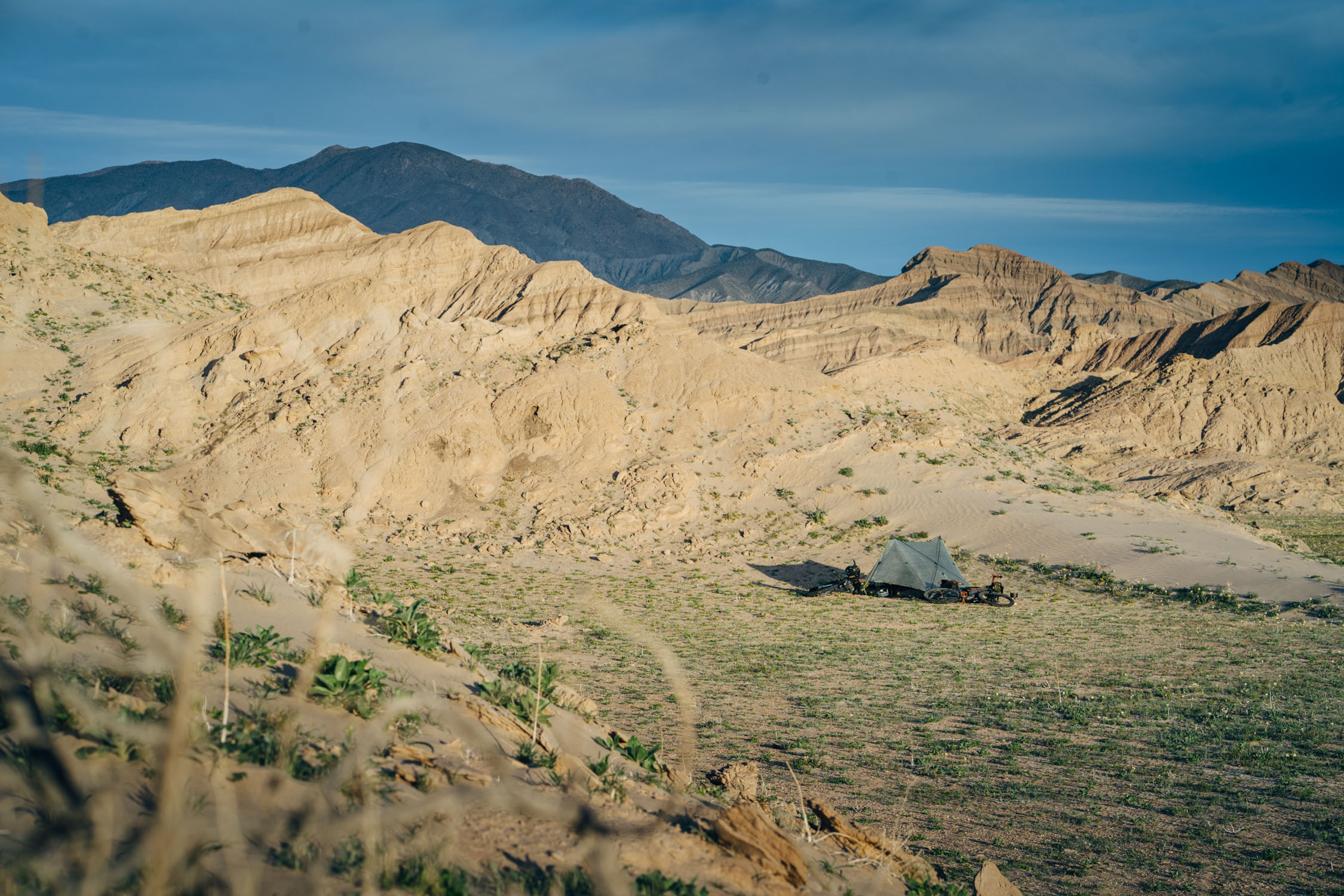
Wind and Weather Protection
After just a single pitch prior to our trip, I decided to take the Duplex along on our Kyrgyzstan bikepacking expedition back in 2016. At that point I didn’t have the two trekking pole replacement poles and brought it with just the Flex Kit. Big mistake, unfortunately. The Flex Kit is super easy to use, and if it’s not freezing rain, snowing, or windy, everything is A-OK. We got our first snowfall on the third night of the trip, and I woke up early in the morning to a collapsing tent. The flimsy carbon poles simply couldn’t handle the weight of the snow. A shake or two righted it, but I had to wake up every 30 minutes or so to do that.
Night five was even worse. We set up camp on a beautiful grassy ridge where the Kyrgyz winds were howling through the valley. I looked over at one point and the Duplex was all but flattened on the ground. I had to retreat from the group down to a ravine that was protected from the wind. This happened on several occasions throughout the trip. The Flex system is simply too…flexy to withstand weather on its own.
This is actually one of the reasons it took some time to review this tent. I kind of gave up on it, until one day I decided to try it with the two trekking pole replacements. These provide a much better structure and can be used with or without the Flex system. With the replacement poles in place, the Zpacks Duplex is actually super sturdy and absolutely fine in wind and weather. Now, my preferred pitch is with the Flex poles and the carbon poles, providing a sturdy, taught shelter that’s easy to pitch and only requires four stakes. That said, with all the accessories it starts getting comparably heavy, given its price tag and materials. All in, with the Flex poles and carbon poles—the best of both worlds—it weighs about 2.27 pounds (1.03kg). There are lighter weight two-person tent options out there with a smaller price tag at this point, such as the $550, 907g Big Agnes Fly Creek HV2 Platinum. That said, the Duplex is a little more spacious and has two doors.
The Duplex is very well ventilated thanks to the large mesh sidewalls and doors. Both of the walls are made entirely of mesh, and there is a 6” mesh strip along the lip of the bathtub floor at each end. The doors can be rolled back and secured with football-shaped toggles, which allows airflow through the entire tent on hot nights. Even so, single-wall tents, particularly ones with DCF/cuben fabric, are notorious for condensation. There were many occasions when using the Duplex where I woke up to moisture on the interior canopy of the tent, and sometimes to the point where it was dripping on my sleeping bag. One trick many bikepackers use to expedite the drying process is to carry a small sponge to mop up the condensation and wring it out outside the tent.
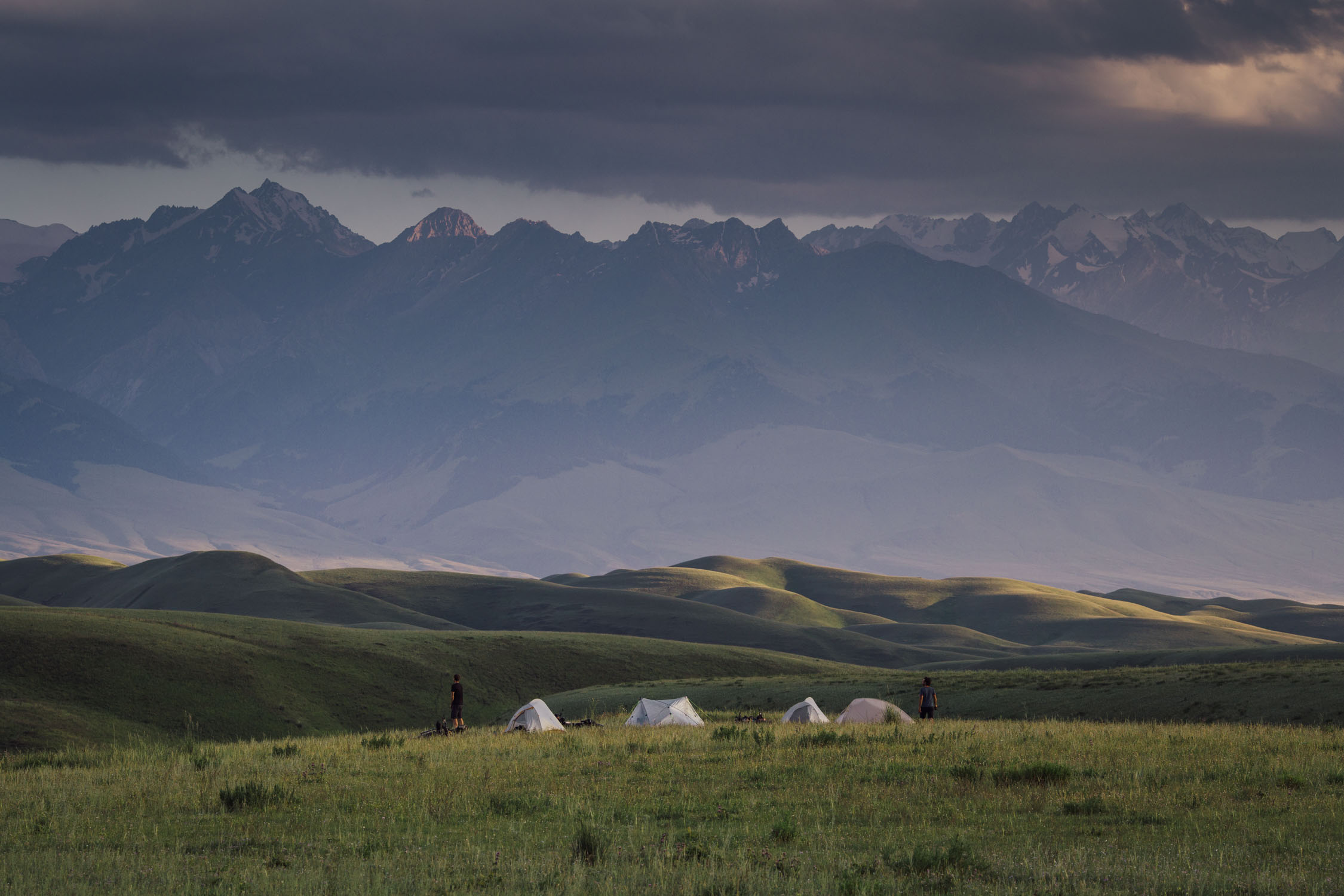
Durability
All in all, I’ve probably put close to 75 nights in this tent. Considering I’ve had it for over three years, that’s not really a lot, but there have been some fairly extreme conditions in the mix, including gale force winds, snow, sleet, single-digit temperatures (°F), and a lot of rain. That certainly translates to enough abuse to represent a couple years for the casual user/weekend bikepacker, or the amount of use it would undergo on a three to four month trip…and definitely enough to expose any issues or weak points that might start rearing their ugly heads. Zpacks actually assigns an expected lifespan for the Duplex, stating that the “expected life span of this shelter is at least one full 2,500+ mile thru-hike, or many years of casual use with some care.” I am guessing they’re assuming a 2,500 thru-hike translates to 100+ nights/pitches. Either way, this Zpacks Duplex hasn’t had any failures other than one of the Flex pole breaking loose, but that was easily fixed with a little glue. The fabric seems somewhat malleable and thin, but still keeps moisture out. Overall, I’d guess I should be able to get many more nights out of it and wouldn’t hesitate to pack it along for a big three-month trip.
One good thing about DCF is that it’s easy to repair with the appropriate tape, such as Gear Aid’s Tenacious Tape. Zpacks includes a piece of repair tape with the tent, for what it’s worth. It’s also worth noting that all Zpacks gear has a two-year limited warranty against defects in materials or workmanship.
Pros
- Incredibly lightweight and still quite durable
- Fairly easy to set up in regular mode, and incredibly fast with the Freestanding Flex kit
- More spacious than other two-person tents
- Bathtub floor is made out of tough DCF, so there’s no need for a ground cloth
- For US residents: it’s made in the USA from USA-made fabrics
Cons
- Flex setup can’t handle significant wind, or the weight of snow, for that matter
- Single-wall DCF wicks a lot of condensation and is slow to dry
- It gets a little on the “heavy” side when carrying both the Flex poles and two carbon poles, for the best of both worlds (1.03kg/2.27lbs)
- Fairly expensive
- Tested Weight (tent + 2 carbon poles) 745 grams (1.64 pounds)
- Tested Weight (Flex poles) 286 grams (10.1oz/0.63 pounds)
- Place of manufacture Melbourne, Florida, USA
- Price (Tent only) $599
- Price (Flex kit) $125
- Manufacturer’s Details (tent) Zpacks.com
- Manufacturer’s Details (Flex kit) Zpacks.com
Wrap Up
If you’re on the hunt for a crazy lightweight two-person tent, it’s highly likely that the Zpacks Duplex is already on your radar. There are certainly others in this weight range these days—the Hyperlite Drigo 2, Tarptent’s Stratosspire Li, and Big Agnes’ Platinum and Carbon series, to name a few. That said, there aren’t too many that are completely freestanding. As mentioned, with the Flex Kit the Duplex can be set up without any stakes at all. However, the Duplex Flex is no match for high wind and frozen precipitation. Shoring it up requires two additional 48″ carbon poles for the two peaks. At that point it starts getting a bit expensive, and even a little heavier than some of its competitors. Even so, there’s no arguing the ease of set up or the Duplex’s spacious interior, and after quite a bit of use, it seems pretty durable. The robust bathtub floor is a major plus. And, to top it off, if you’re in the US, it’s nice to know that it’s made here with US-sourced materials.
Please keep the conversation civil, constructive, and inclusive, or your comment will be removed.















